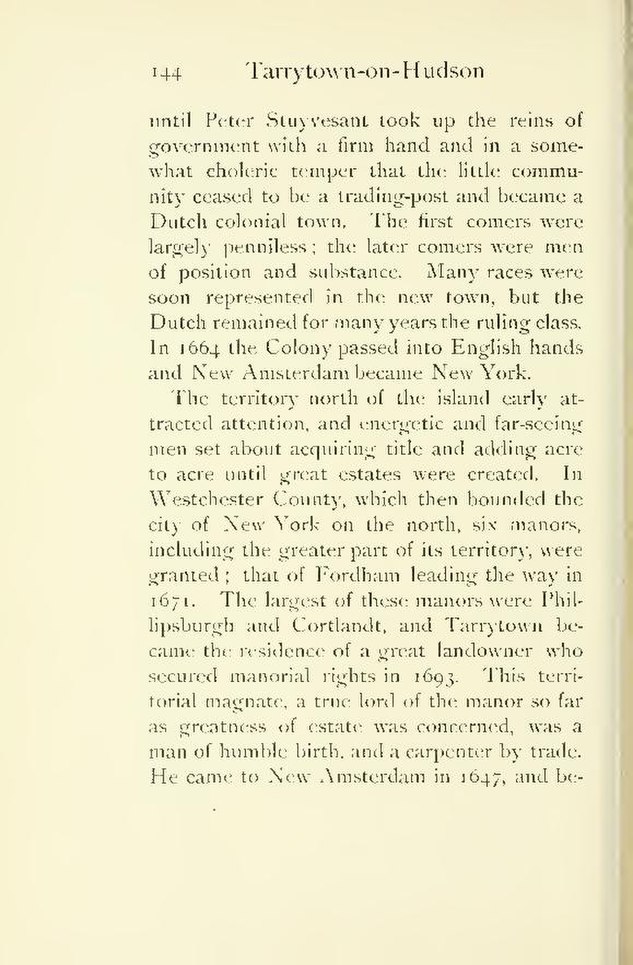until Peter Stuyvesant took up the reins of government with a firm hand and in a some-*what choleric temper that the little community ceased to be a trading-post and became a Dutch colonial town. The first comers were largely penniless; the later comers were men of position and substance. Many races were soon represented in the new town, but the Dutch remained for many years the ruling class. In 1664 the Colony passed into English hands and New Amsterdam became New York.
The territory north of the island early attracted attention, and energetic and far-seeing men set about acquiring title and adding acre to acre until great estates were created. In Westchester County, which then bounded the city of New York on the north, six manors, including the greater part of its territory, were granted; that of Fordham leading the way in 1671. The largest of these manors were Phillipsburgh and Cortlandt, and Tarrytown became the residence of a great landowner who secured manorial rights in 1693. This territorial magnate, a true lord of the manor so far as greatness of estate was concerned, was a man of humble birth, and a carpenter by trade. He came to New Amsterdam in 1647, and be-
